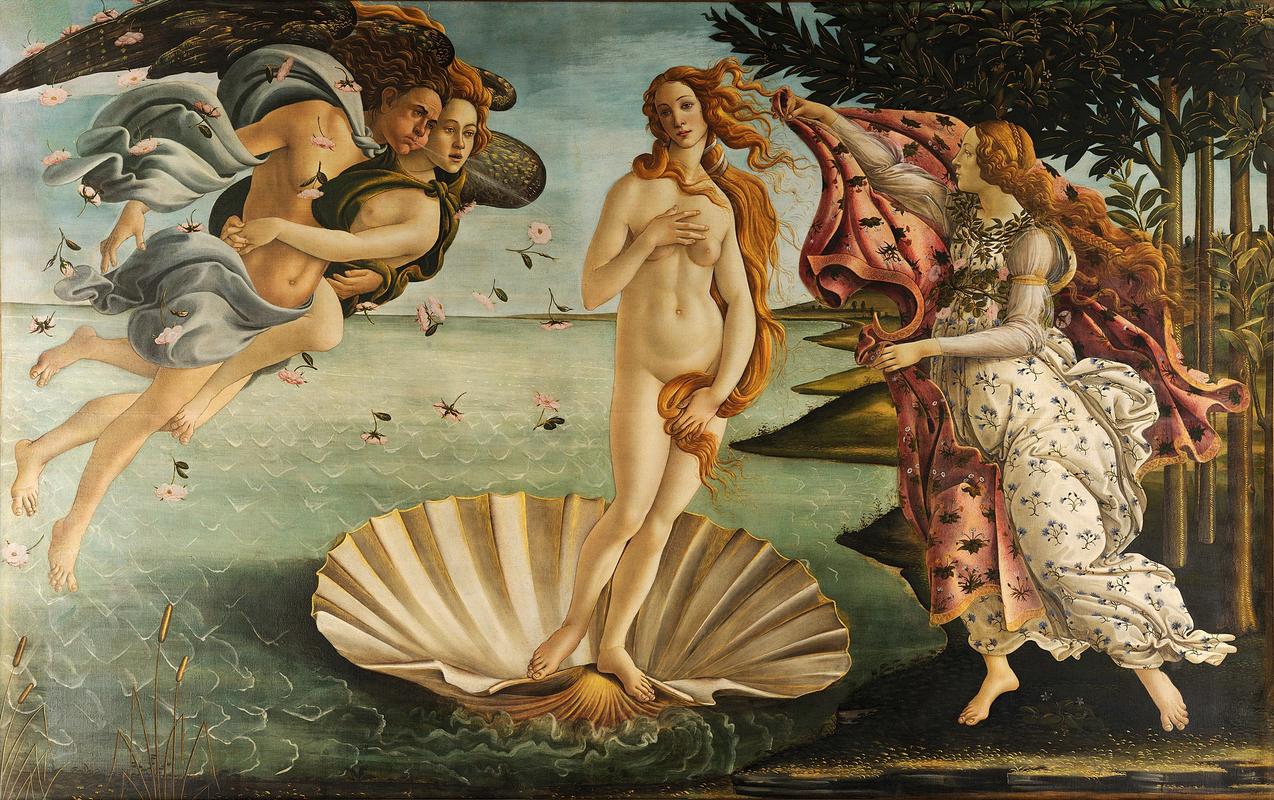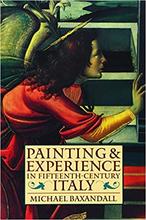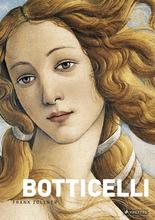More about Birth of Venus
- All
- Info
- Shop

Contributor
Calling all die-hard romantics, chick flick enthusiasts, and Hallmark executives! Sandro Botticelli's got somethin' for you.
I'm going to set aside my prejudice against the ooey-gooey topic of love, and weave for you the mythological story of how our world came to be filled with romantic idealists...instead of inhabited by a superior race of demonic sociopaths.
For this, we have the goddess of love to thank. Venus is the Roman goddess of love, beauty, sex, fertility, and desire. She pretty much got all the womanly wiles a young and budding deity could ask for. With the powers invested in Venus, our world can now soak in the beauty of roses, foot rubs, and long walks on the beach. With all these pleasant connotations, it should come as no surprise that Venus is one of the most commonly depicted goddesses throughout art history, and this version of her birth by Sandro Botticelli is iconic.
But wait. If this is her birth, why is she a full grown woman? Well, it would appear that goddesses don’t have to deal with the nonsense of a vaginal birth and all the trials and tribulations of childhood. (Not to mention the nightmares of puberty!) Folklore has it that Venus was born of the sea, which seems to discredit the whole female empowerment and fertility thing she has going for her. Not to knock the beauty of natural birth, Botticelli has placed her on a seashell, which throughout history has been used as a metaphor for the vulva. Ever heard the term "bearded clam"?
I think I speak for all of us when I say: thank goodness she is naked! Beyond the fact that she has a sensually curvy body (take that, modern culture), this is a 15th century Renaissance painting and up until this point, unless the painting was of Eve, it was unheard of to embrace the all-enticing splendor of the nude female physique. But Venus wouldn't be Venus without showing a little...or a lot of skin. She keeps it pretty tasteful by using her gorgeous long hair to cover up the really naughty bits.
Since this painting is all about love, it seems fitting that Botticelli chose Simonetta Vespucci as the model for this piece. He was totally captivated with this woman, and was so obsessed with her that he even requested that he be buried at her feet, which is exceptionally creepy since he was over twice her age and she was already hitched to someone else. You can see his portrait of her face here.
It is believed that the Medici family of Florence, which was a banking family, political dynasty, and a royal house, contracted this painting. Having been dubbed the richest family in Europe, we can only hope they didn’t low-ball Botticelli on the commission. Either way, Botticelli was probably just stoked to be able to stare at his true love posing naked for him for an extended period of time. That's amore.
Featured Content
Here is what Wikipedia says about The Birth of Venus


The Birth of Venus (Italian: Nascita di Venere [ˈnaʃʃita di ˈvɛːnere]) is a painting by the Italian artist Sandro Botticelli, probably executed in the mid-1480s. It depicts the goddess Venus arriving at the shore after her birth, when she had emerged from the sea fully-grown (called Venus Anadyomene and often depicted in art). The painting is in the Uffizi Gallery in Florence, Italy.
Although the two are not a pair, the painting is inevitably discussed with Botticelli's other very large mythological painting, the Primavera, also in the Uffizi. They are among the most famous paintings in the world, and icons of Italian Renaissance painting; of the two, the Birth is better known than the Primavera. As depictions of subjects from classical mythology on a very large scale they were virtually unprecedented in Western art since classical antiquity, as was the size and prominence of a nude female figure in the Birth. It used to be thought that they were both commissioned by the same member of the Medici family, but this is now uncertain.
They have been endlessly analysed by art historians, with the main themes being: the emulation of ancient painters and the context of wedding celebrations (generally agreed), the influence of Renaissance Neo-Platonism (somewhat controversial), and the identity of the commissioners (not agreed). Most art historians agree, however, that the Birth does not require complex analysis to decode its meaning, in the way that the Primavera probably does. While there are subtleties in the painting, its main meaning is a straightforward, if individual, treatment of a traditional scene from Greek mythology, and its appeal is sensory and very accessible, hence its enormous popularity.
Check out the full Wikipedia article about The Birth of Venus
























